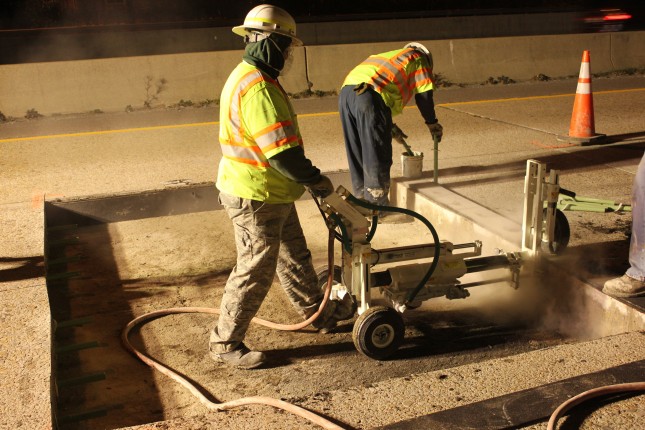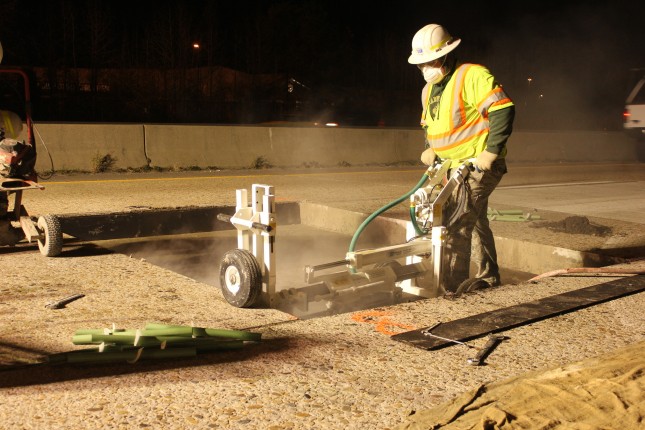
Concrete dowel-pin drills are critical to maximizing productivity on the jobsite. Whether drills are single or multi-gang units, powered pneumatically or hydraulically and manually operated, self-propelled or equipment-mounted, their efficiency and accuracy are a key part of keeping projects on time and under budget.
Dowel-pin drills are designed to provide years of dependable service—if they are properly operated and maintained. The following are three steps construction companies can take regularly to ensure peak dowel-pin drill performance, control costs and extend equipment life.
These are general guidelines from Minnich Manufacturing, a manufacturer of dowel-pin drills. Construction companies should always follow operation and maintenance recommendations from the manufacturer of their specific dowel-pin drills.
1. Do away with dry firing.
Operators should make every effort to minimize the frequency of dry firing. When the tool is allowed to run repeatedly without drilling, damaging energy back-feeds through the tool due to a lack of pressure against the bit. Dry firing can lead to increased maintenance and repair costs and a shorter drill life span. For more on the effects of dry firing, watch this video.
Some dowel-pin drill manufacturers have built-in features on their equipment to help ensure that drills are shut off when not in use. For example, Minnich offers the following:
- Single-drill, on-grade units include pistol-grip operator controls that only allow the drill to function if held in the on/feed position.
- On-slab drills have an automatic shutoff feature that turns off the tool as it retracts from the hole.
- Self-propelled wireless units feature drills that automatically retract and shut off when the hole depth has been reached.

2. Prioritize proper lubrication.
Proper lubrication must be prioritized to maximize dowel-pin drill efficiency and longevity. Failure to lubricate the equipment at the right intervals with the right lubricants can lead to overheating and excessive wear, damaging the equipment and shortening its life. Dowel-pin drill lubricators should be filled at the recommended hour intervals, and only recommended lubricants should be used. Lubrication intervals and a list of acceptable lubricants for defined ambient temperature ranges can be found in the drill’s operator’s manual.
3. Be diligent about daily maintenance.
For the safety of the operator, the best performance and preventing costly damage to the equipment, it is important to follow all maintenance guidelines outlined in the operator’s manual. Regular maintenance items include, but are not limited to:
- Thoroughly inspecting the machine to ensure excellent condition
- Checking all hardware for tightness daily and tighten as needed
- Greasing all fittings at least once a week
This is the first in a two-part series on dowel-pin maintenance and selection. Click here for an article on proper long-term storage of dowel-pin drills.
